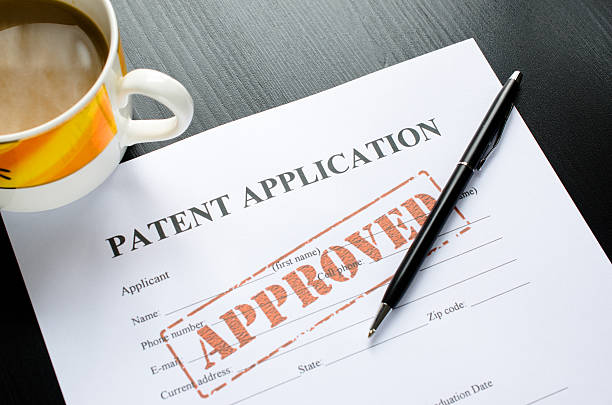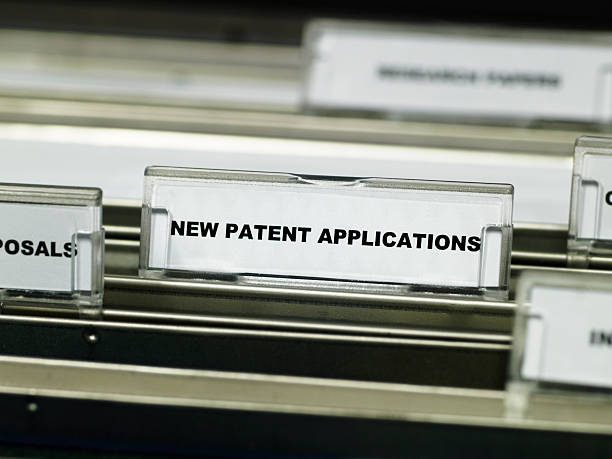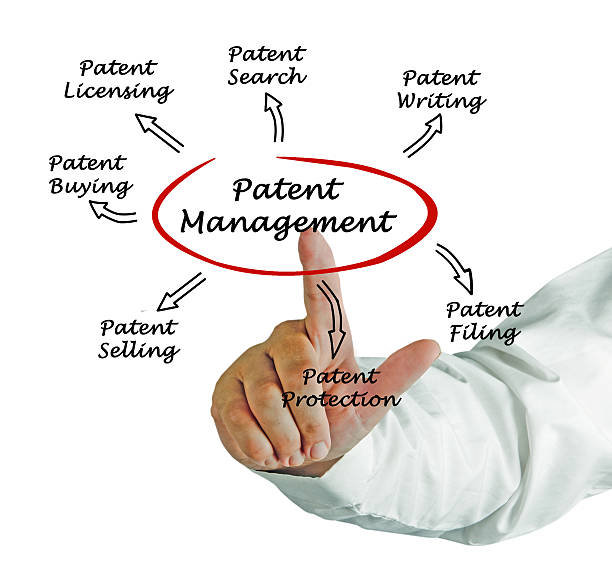Introduction
In an era characterized by rapid technological advancements, the traditional processes associated with patent filing are undergoing a significant transformation. Automation, powered by artificial intelligence (AI) and machine learning (ML), is revolutionizing the way patents are prepared, filed, and managed. This article delves into the impact of automation on the patent filing process, exploring its benefits, challenges, and the potential for reshaping the landscape of intellectual property.
The traditional process of patent filing has long been regarded as a complex and time-consuming endeavor. The meticulous drafting of patent applications, the rigorous examination process, and the need for legal expertise have posed challenges for inventors and businesses alike. However, the advent of automation is changing the game, offering a revolutionary approach to patent filing that promises efficiency, accuracy, and cost-effectiveness.

The Rise of Automation in Patent Filing
Overview of Traditional Patent Filing
The process of traditional patent filing is a meticulous journey that involves multiple stages, each requiring careful consideration and adherence to legal protocols. Understanding this conventional path is essential for appreciating the transformative impact that automation is poised to have on intellectual property processes.
1. Ideation and Invention: The Starting Point
The journey begins with the inception of an idea or invention. Inventors, researchers, and businesses engage in the creative process, conceiving innovations that have the potential to meet specific criteria for patentability. This initial phase requires a deep understanding of the existing intellectual property landscape to ensure the novelty and inventiveness of the concept.
2. Patentability Assessment: Navigating Legal Criteria
Once an invention takes shape, the next step involves assessing its patentability. This assessment encompasses a thorough review of the invention’s novelty, non-obviousness, and utility. Legal practitioners or patent agents play a crucial role in guiding inventors through this stage, evaluating the invention against existing patents and literature to determine its eligibility for patent protection.
3. Drafting the Patent Application: Precision in Language and Detail
Drafting the patent application is a cornerstone of the traditional filing process. This stage involves articulating the invention with utmost precision, describing its features, functions, and unique aspects. The drafting must adhere to legal and technical standards, requiring a balance between technical accuracy and clarity to ensure effective communication with patent examiners.
4. Prior Art Search: Uncovering the Intellectual Landscape
A comprehensive prior art search is a critical aspect of traditional patent filing. This involves scouring existing patents, scientific literature, and other relevant sources to identify prior inventions similar to the one being filed. The goal is to establish the novelty of the invention and distinguish it from existing technologies.
5. Filing with Patent Offices: Initiating the Examination Process
Once the patent application is drafted and the prior art search is complete, the application is filed with the relevant patent office. This marks the initiation of the examination process, during which patent examiners rigorously assess the application to ensure compliance with legal requirements and to verify the novelty and inventiveness of the claimed invention.
6. Patent Examination: Rigorous Scrutiny by Examiners
Examiners scrutinize the patent application to assess its merit and compliance with patent laws. This phase involves correspondence between the applicant and the examiner, addressing any queries or concerns raised during the examination. It may also include amendments to the application to secure patentability.
7. Grant or Refusal: The Outcome of Examination
Following examination, the patent office issues a decision either granting or refusing the patent. If granted, the patent provides the inventor with exclusive rights to the invention for a specified period. If refused, the applicant may choose to appeal the decision or explore other avenues.
8. Maintenance and Enforcement: Post-Grant Considerations
After the patent is granted, maintenance involves periodic fees to keep the patent in force. Enforcement becomes a consideration if there is an infringement of the granted patent, leading to legal actions to protect the inventor’s rights.
Understanding this traditional path sets the stage for appreciating the transformative potential of automation in patent filing. The next sections will delve into how emerging technologies are reshaping each stage of this conventional journey, offering a glimpse into a future where efficiency, accuracy, and accessibility redefine the landscape of intellectual property.
Emergence of Automation
The emergence of automation in patent filing represents a paradigm shift, driven by advancements in artificial intelligence (AI) and machine learning (ML). This section delves into the evolutionary trajectory of automation, tracing its roots and exploring the catalyzing factors that have propelled it to the forefront of intellectual property processes.
Genesis of Automation in Patent Filing: A Historical Perspective
The integration of automation into patent filing is not a recent phenomenon; rather, it has roots in the broader automation trends that have shaped various industries. The digitization of data, the development of sophisticated algorithms, and the increasing computational power have collectively set the stage for the application of automation in the intricate domain of intellectual property.
In the early stages, automation manifested through the digitization of patent databases, simplifying the access to prior art and enabling more efficient searches. However, it is the convergence of AI and ML technologies that has propelled automation to new heights, revolutionizing the entire patent filing process.
Role of Artificial Intelligence: From Drafting to Analysis
Artificial intelligence has emerged as a pivotal force in automating several aspects of patent filing. In the realm of patent drafting, AI algorithms have demonstrated the capability to generate comprehensive and technically accurate patent applications. These algorithms leverage vast datasets, learning from existing patents to craft language that aligns with legal requirements while capturing the essence of the invention.
Moreover, AI plays a significant role in the analysis of patent documents. Natural Language Processing (NLP) algorithms, a subset of AI, are employed to extract valuable insights from patent literature. This goes beyond mere keyword matching, enabling a nuanced understanding of the technical content and legal intricacies embedded in patents.
Machine Learning and Prior Art Searches: Efficiency Amplified
Machine learning algorithms are at the forefront of automating prior art searches—an inherently complex and time-consuming task in traditional patent filing. These algorithms are trained to sift through vast repositories of information, quickly identifying relevant prior art and providing examiners and filers with a comprehensive overview of existing technologies.
The iterative nature of machine learning ensures continuous improvement in search accuracy and efficiency over time. As the algorithms encounter more data, they refine their understanding of relevant patterns, contributing to increasingly precise prior art identification.
Natural Language Processing: Decoding Patent Documents
Natural Language Processing (NLP) is a game-changer in the analysis of patent documents. By parsing and understanding the natural language used in patents, NLP algorithms extract critical information, including technical details, legal nuances, and contextual relationships. This enables a more streamlined and insightful examination process, reducing the burden on human examiners and expediting decision-making.
Automation in Patent Office Operations: Streamlining Administration
The impact of automation extends beyond the filing process itself. Patent offices worldwide are incorporating automated systems to streamline administrative tasks, from document processing to application tracking. This not only enhances the overall efficiency of patent offices but also contributes to reducing the backlog of applications, a persistent challenge in the traditional patent filing landscape.
Industry Adoption and Success Stories
The adoption of automation in patent filing is not confined to a few pioneering entities; it is a trend embraced by a spectrum of industries. Tech giants, research institutions, and innovative startups are leveraging automation to enhance their patent processes. Success stories abound, showcasing how automation has not only improved efficiency but has also led to higher-quality patents and more robust intellectual property portfolios.
Catalysts for Accelerated Adoption
Several factors have acted as catalysts for the accelerated adoption of automation in patent filing. The increasing volume of patent applications, the growing complexity of technology, and the need for timely and cost-effective solutions are driving forces. Additionally, the realization of the potential for automation to address longstanding challenges in the traditional process, such as human error and subjectivity, has further fueled its adoption.
The Intersection of Automation and Innovation
Automation in patent filing is not just a technological advancement; it is a catalyst for innovation. By automating routine and time-consuming tasks, inventors and legal practitioners can redirect their focus toward more strategic aspects of the patenting process. This intersection of automation and innovation creates a positive feedback loop, fostering an environment where technological progress begets further advancements in intellectual property management.
As automation continues to evolve, its impact on patent filing is poised to deepen. The subsequent sections of this article will explore the specific technologies driving this revolution and delve into the tangible benefits that automation brings to the intricate landscape of intellectual property processes.

Benefits of Automated Patent Filing
The integration of automation into the patent filing process is not merely a technological enhancement; it represents a profound shift that brings with it a multitude of benefits. From expediting filing procedures to enhancing accuracy and reducing costs, automation is revolutionizing intellectual property processes. This section explores the tangible advantages of automated patent filing.
1. Speed and Efficiency: Accelerating the Filing Process
One of the primary benefits of automated patent filing is the acceleration of the traditionally time-consuming process. Automation eliminates manual bottlenecks and streamlines various stages, from initial drafting to final submission. AI-powered algorithms can generate patent applications at a pace far exceeding human capabilities, significantly reducing the time it takes to move an invention from concept to filing.
2. Cost-Effectiveness: Optimizing Resource Utilization
The traditional patent filing process often incurs substantial costs associated with legal fees, extensive prior art searches, and the time invested by skilled professionals. Automation mitigates these financial burdens by optimizing resource utilization. AI algorithms can perform tasks that would traditionally require significant human involvement, reducing the overall cost of preparing and filing patent applications.
3. Error Reduction: Enhancing Accuracy and Consistency
Human error is an inherent risk in any complex process, and patent filing is no exception. Automated systems significantly reduce the likelihood of errors in patent applications. AI-driven drafting tools ensure consistency and accuracy in language and technical descriptions, minimizing the risk of mistakes that could compromise the validity of the patent.
4. Enhanced Patent Quality: Precision in Drafting
Automation contributes to the improvement of patent quality by enhancing the precision of drafting. AI algorithms, trained on vast datasets of existing patents, generate applications that align with legal requirements and capture the technical intricacies of the invention. This precision not only expedites the examination process but also increases the likelihood of securing a robust and defensible patent.
5. Rapid Prior Art Searches: Informing Decision-Making
The speed and efficiency of automated prior art searches are transformative. Machine learning algorithms can quickly analyze extensive databases, providing comprehensive insights into existing technologies. This rapid access to prior art not only informs the drafting process but also aids patent examiners in making well-informed decisions during the examination phase.
6. Streamlined Examination Process: Reducing Backlogs
Automation contributes to a more efficient examination process. By providing examiners with well-organized and analyzed information, automation reduces the backlog of patent applications. This not only benefits inventors by expediting the time to patent grant but also enhances the overall functionality of patent offices.
7. Accessibility and Inclusivity: Lowering Barriers
The automation of patent filing has the potential to lower barriers to entry, making the patent system more accessible and inclusive. Small and medium-sized enterprises (SMEs), startups, and individual inventors, who may have been deterred by the complexities and costs of traditional filing, can leverage automated tools to navigate the patent process more effectively.
8. Focus on Strategic Aspects: Empowering Innovation
By automating routine and time-consuming tasks, inventors and legal practitioners can redirect their efforts toward more strategic aspects of the patenting process. This includes a deeper focus on innovation, research, and the development of intellectual property strategies. Automation thus empowers stakeholders to engage in more creative and forward-thinking endeavors.
9. Scalability: Handling Increased Workloads
The scalability of automated systems is a significant advantage, particularly in the face of increasing patent application volumes. As the demand for patent protection rises, automation ensures that the filing process can scale seamlessly, accommodating a larger number of applications without compromising efficiency or quality.
10. Data-Driven Insights: Informed Decision-Making
Automation generates valuable data-driven insights throughout the patent filing journey. From the drafting phase to prior art searches and examination, the wealth of data produced by automated systems can inform strategic decision-making. This data-driven approach enhances the overall effectiveness of intellectual property management.
In summary, the benefits of automated patent filing extend across the entire spectrum of the patenting process. From reducing time and costs to enhancing accuracy and promoting inclusivity, automation is a catalyst for positive change in the world of intellectual property. The subsequent sections will delve into the specific technologies powering this transformation, providing a deeper understanding of how AI and ML contribute to the realization of these benefits.
Technologies Powering Automated Patent Filing
Automated patent filing is propelled by a sophisticated ensemble of cutting-edge technologies that collectively form the engine of transformation in intellectual property processes.
1. Artificial Intelligence (AI) in Patent Drafting
Artificial Intelligence (AI) is ushering in a revolutionary era in patent drafting, reshaping the landscape of intellectual property processes. AI-powered patent drafting tools, equipped with advanced machine learning algorithms and Natural Language Processing (NLP), are streamlining the traditionally intricate process of creating patent applications. These tools analyze vast datasets of existing patents, enabling them to generate drafts with unparalleled precision. NLP goes beyond mere keyword matching, understanding the nuanced language of patents and ensuring that the drafted applications not only adhere to legal requirements but also capture the intricate technical details of the inventions. Automated claim generation, iterative learning, and the collaborative synergy between AI and human experts are further propelling the efficiency and quality of patent drafting, setting the stage for a future where innovation and automation converge seamlessly in the realm of intellectual property.
2. Machine Learning for Prior Art Searches
Machine Learning (ML) is revolutionizing the critical stage of prior art searches in patent filing, significantly enhancing efficiency and accuracy. Traditionally a time-consuming and labor-intensive task, prior art searches are streamlined through ML algorithms that rapidly analyze extensive databases of patents and scientific literature. These algorithms, trained on diverse datasets, excel in identifying relevant references, going beyond simple keyword matching to comprehend contextual relationships and technical intricacies. The iterative nature of ML ensures continuous improvement, refining the search accuracy over time. By expediting the identification of prior art, ML not only accelerates the overall patent filing process but also provides patent examiners and filers with comprehensive insights, contributing to more informed decision-making and strengthening the foundation of intellectual property protection.
3. Natural Language Processing (NLP) in Patent Analysis
Natural Language Processing (NLP) is a transformative force in patent analysis, transcending traditional keyword-based approaches to reveal profound intellectual insights embedded in patent documents. NLP algorithms dissect the intricate language of patents, extracting meaningful information beyond surface-level terms. By comprehending the context, semantics, and legal nuances of patent language, NLP empowers automated systems to distill actionable insights from vast repositories of intellectual property data. This not only expedites the analysis phase of patent filing but also facilitates a deeper understanding of the technological landscape, aiding patent examiners, researchers, and innovators in making informed decisions. The ability of NLP to unravel the complexities within patent documents marks a pivotal shift in how intellectual property is navigated and leveraged in an increasingly data-driven era.

The Impact of Automation on Patent Quality
Automation has emerged as a transformative force in shaping the quality of patents, redefining the traditional benchmarks of precision, consistency, and efficiency. This section delves into the multifaceted ways in which automation is influencing the quality of patents throughout the filing and examination processes, ushering in a new era of intellectual property management.
1. Enhanced Precision in Patent Drafting
One of the primary impacts of automation on patent quality lies in the realm of drafting. AI-powered tools, equipped with sophisticated algorithms, bring a level of precision to patent drafting that transcends human capabilities. By analyzing extensive datasets and understanding the intricacies of language, these tools generate applications that not only align with legal requirements but also capture the technical nuances of the inventions with remarkable accuracy. The result is a higher standard of drafted patents, reducing the likelihood of errors and ensuring that the patent accurately reflects the innovation it seeks to protect.
2. Consistency Across Applications
Automation contributes significantly to the consistency of patent applications. Unlike human drafters who may introduce variations in language or formatting, automated systems maintain a standardized approach across applications. This consistency is not only aesthetically pleasing but also crucial for ensuring that patents are interpreted uniformly, both by patent examiners during the examination process and by third parties accessing the patent documentation. Consistency becomes a mark of reliability, reinforcing the quality and credibility of the intellectual property.
3. Reduction of Errors
The meticulous nature of patent drafting and filing leaves room for human errors, which can have profound implications on the validity and enforceability of a patent. Automation serves as a robust quality assurance mechanism by significantly reducing the occurrence of errors. AI-driven drafting tools, guided by predefined legal and technical parameters, minimize the risk of inaccuracies in language, description, and claim construction. This reduction in errors not only enhances the overall quality of patents but also contributes to a more streamlined examination process, as examiners can focus on substantive issues rather than correcting procedural mistakes.
4. Streamlined Examination Processes
The impact of automation on patent quality extends beyond the drafting phase to the examination process. Automated systems provide examiners with well-organized and analyzed information, expediting the review of patent applications. This streamlined examination process ensures that examiners can focus on the substantive evaluation of inventions rather than being burdened with administrative tasks. The result is a more efficient examination, where the quality of patents is not compromised but rather enhanced by the focused attention of examiners on the novel and inventive aspects of the applications.
5. Data-Driven Decision-Making
Automation brings a data-driven approach to decision-making in patent filing. The insights generated by AI and machine learning algorithms, from prior art searches to analysis of patent documents, empower stakeholders to make informed decisions. This data-driven decision-making process contributes to the overall quality of patents by ensuring that strategic choices are backed by a comprehensive understanding of the intellectual property landscape. Whether it’s optimizing claim language, addressing potential challenges, or identifying opportunities for broader protection, the data-driven approach enhances the strategic dimension of patent quality.
6. Continuous Improvement through Iterative Learning
A hallmark of automation in the context of patent quality is its capacity for continuous improvement through iterative learning. AI algorithms, exposed to diverse datasets and real-world patent examples, adapt and refine their capabilities over time. This iterative learning process ensures that automation systems evolve in tandem with the dynamic nature of technology and intellectual property. As they encounter new challenges and complexities, these systems enhance their ability to produce high-quality patents that align with evolving legal standards and technological advancements.
In sum, the impact of automation on patent quality is a multifaceted transformation that touches every stage of the patenting journey. From the precision of drafting to the efficiency of examination and the strategic decision-making enabled by data-driven insights, automation is reshaping the very fabric of intellectual property management. As the integration of automation continues to evolve, the quality of patents stands poised for continuous enhancement, reflecting the innovative spirit of the technologies driving this revolution.
Conclusion
The automation of patent filing represents a revolutionary approach that is reshaping the landscape of intellectual property. As technology continues to advance, the benefits of automation are becoming increasingly apparent, offering improved efficiency, accuracy, and cost-effectiveness. However, the challenges and ethical considerations must not be overlooked, and a careful balance between technological innovation and regulatory frameworks must be maintained. In navigating this transformative era, stakeholders in the patent ecosystem can leverage automation to propel innovation and secure intellectual property in a more streamlined and effective manner.

